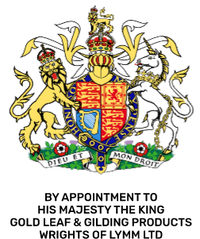Edible Gold Leaf Across the World - Bulgaria
- by sam@wrightsoflymm.co.uk User
Introduction
For centuries, the allure of gold has transcended its role as currency or ornament. In Bulgaria, edible gold leaf and silver leaf have held a unique place in tradition, artistry, and gastronomy. Today, chefs, artisans, and cultural enthusiasts embrace 24 carat goldleaf, 23 carat gold leaf, and even gold flakes, silver flakes, gold dust, and silver dust as symbols of luxury and heritage.
This article explores the history and uses of edible gold across Bulgaria, highlighting how this shimmering tradition continues to thrive.
The Origins of Edible Gold in Bulgarian History
The tradition of using gold in food and ritual in Bulgaria is deeply rooted in Thracian and medieval history. Archaeological discoveries show Thracian burial treasures that not only reflected wealth but were sometimes linked to ceremonial feasts. These early practices laid the foundation for later symbolic uses of gold in Bulgarian culture.
During the Middle Ages, Bulgarian rulers and nobility adopted Byzantine customs, where gold leaf was not only used in religious icons but occasionally in celebratory foods and drinks. This practice symbolized divine blessing, purity, and prosperity.
Gold Leaf in Bulgarian Orthodox Tradition
The Bulgarian Orthodox Church preserved the spiritual use of goldleaf long before it entered modern cuisine. Icon painters applied delicate 23 carat gold leaf to religious icons, frescoes, and manuscripts. While not edible in this context, this use helped associate gold with sanctity and transcendence.
During major religious feasts, symbolic foods occasionally featured gold dust or decorative elements that represented holiness and abundance. These associations made the later culinary uses of gold a natural extension of cultural tradition.
Modern Culinary Uses of Edible Gold in Bulgaria
Luxury Dining and Desserts
In contemporary Bulgaria, luxury restaurants and boutique bakeries increasingly use 24 carat gold leaf to decorate high-end cakes, pastries, and chocolates. A popular trend is topping layered tortes or mousse cakes with delicate gold flakes to elevate their visual and symbolic appeal.
Craft chocolatiers also experiment with silver flakes and gold dust, creating confections that merge traditional recipes with modern aesthetics.
Festive Drinks
Cocktails, sparkling wines, and rakia (a traditional Bulgarian fruit brandy) are occasionally infused with swirling gold flakes or silver dust to celebrate weddings, anniversaries, and elite gatherings. This use echoes the ancient Thracian tradition of combining precious metals with ritual drinks.
Traditional Sweets with a Modern Twist
Bulgaria’s famous banitsa (cheese pastry), kozunak (Easter bread), and baklava have all seen modern variations dusted with gold dust or decorated with silver leaf during holiday seasons. This growing trend merges old culinary customs with luxury presentation.
24 Carat vs. 23 Carat Gold Leaf in Bulgarian Cuisine
When it comes to edible decoration, purity matters. In Bulgaria:
-
24 carat goldleaf is considered the purest, safest, and most luxurious option. It is commonly used for exclusive desserts and drinks.
-
23 carat gold leaf is also widely used, particularly in fine dining, as it offers durability and ease of application while remaining safe to consume.
Both types are completely tasteless, serving only as aesthetic and symbolic enhancements.
The Rise of Silver Leaf, Gold Flakes, and Dust
In addition to traditional gold leaf, Bulgarian chefs and artisans now embrace silver leaf for a cooler, shimmering effect. Paired with gold flakes and silver flakes, this combination adds contrast and elegance to plated desserts.
Meanwhile, gold dust and silver dust are used for subtle highlighting on cakes, cupcakes, and festive breads, giving them a magical glow without overpowering the dish.
Beyond Cuisine: Goldleaf in Bulgarian Culture
Gold is not just for eating. In Bulgaria, gold leaf continues to be essential in art, iconography, and cultural preservation. Traditional craftsmen and restorers use 23 carat gold leaf to restore historic churches, monasteries, and cultural monuments.
This ongoing connection between edible and artistic uses keeps goldleaf firmly rooted in both sacred and everyday Bulgarian life.
Conclusion
From Thracian rituals to modern fine dining, edible gold leaf in Bulgaria tells a story of luxury, spirituality, and innovation. Whether in the form of 24 carat goldleaf, 23 carat gold leaf, silver leaf, or the sparkle of gold flakes, silver flakes, gold dust, and silver dust, these elements remain powerful symbols of wealth and celebration.
As Bulgarian cuisine evolves, the timeless glow of gold continues to enrich both tradition and taste.






